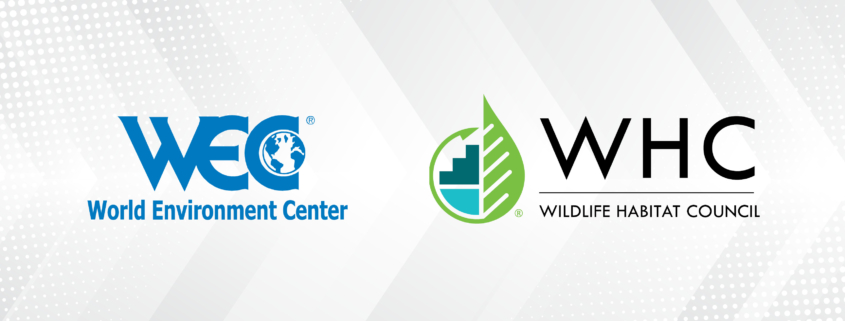Looking Back, Looking Ahead: The Four Lessons Informing This Year and Beyond
One of WHC’s authentic strengths as an organization is our ability to deploy almost four decades of experience working at the intersection of business and nature to understand the real-world challenges and options for supporting companies on their nature-positive journeys. We’ve always had a bias for action, and we’ve always been pragmatic, focused on what’s possible over what’s ideal.
In the past year, WHC has deployed this pragmatism to help a variety of companies cut through the noise of the corporate nature landscape where advice is abundant, but clarity — and sometimes honesty — is in short supply. Feedback from WHC’s membership has shown that confusion reigns when it comes to companies determining the facts from the sales fiction.
Over the past year of working with our members and others, four interesting themes have emerged that continue to inform WHC’s efforts in 2024 and beyond:
Benchmarking Is a Clarifying Agent
In 2023, WHC carried out biodiversity benchmarking exercises for several companies in the extractive, manufacturing and energy sectors. The consulting team assessed companies’ published actions, commitments, disclosures and reporting against a group of peer companies and placed the results on a spectrum from laggard to leader.
We found that:
- There is a clear difference between the companies that do and the companies that tell, and that difference can leave a company focused on action over reporting at a disadvantage against its peers.
- The current landscape of reports, assessments and indices doesn’t provide good spaces to capture the reality on the ground — and if it does, these expectations don’t take context into account. As an example: A company gets dinged for not having a deforestation policy even if geospatial analysis of its operations shows no proximity to core forests. A similar company in the same sector will rate higher for having the policy, even if it is moot.
Company culture dictates whether ‘doing’ or ‘telling’ dominates sustainability work, and whether sustainability offices draw staff from communications or engineering disciplines likewise drives either a narrative or action bias.
Framework Readiness Is Essential
The author Ann Lamott explained the title of her book Bird by Bird with an anecdote about her brother who, when he was 10 years old, had left to the last minute a school report he needed to write on birds. As he sat tearfully at the table with his reference books, notebooks and pencils spread out in front of him, panicked by the mammoth task ahead, his father sat beside him and said, “Bird by bird, buddy. Just take it bird by bird.”
Many sustainability professionals will empathize with the situation of a blank sheet of paper and a mammoth task ahead.
We found that:
- A “bird-by-bird” approach works just as well for engaging in new frameworks, like the Taskforce on Nature-related Financial Disclosures (TNFD) and Science Based Tagrets Network (SBTN), as it does for school reports. While this finding sounds like an obvious one, we learned that companies struggle with where and how to start. The exhortation “just start somewhere” does not really help.
- Readiness assessments are key to supporting progress, as they allow companies to understand specific requirements and realize that much of the information is available internally through already collected data and externally through existing tools and guidances.
The consulting team at WHC developed a TNFD readiness assessment tool that we deployed with several companies at different points of their nature-positive journeys. In each case, the assessment helped the company arrive at a starting point that made sense for its operations.
Saying No Can Be a Superpower
We heard from many companies across the year about the firehose of content from consultants urging them to adopt a suite of frameworks or align with certain initiatives. This sends confusing and overwhelming messages to nascent nature offices and, in some cases, provides inaccurate and misleading messages that reek of bandwagon-jumping.
We found that:
- Companies are not yet resourced adequately to respond to the flow of information or to sort fact from fiction, which can lead to a stasis if the time needed to assess the veracity of messages is not freely available.
- Attention to corporate culture and operational context are often missing from the “one-size-fits-all” presentations, which renders these approaches especially ineffective and wasteful of sustainability officers’ time.
When WHC offered a service to companies to help them say no, it was met with much enthusiasm. Saying no is not about refusing to act for nature — it’s about directing the available energy to act in the right direction. Saying no is about understanding the difference between what must be done, what should be done and what could be done, as well as understanding what is unnecessary, ineffective or diversionary.
The Lack of Data Is Not the Problem
Let’s first agree that data is not needed to act for nature. Metrics are not a prerequisite to restoring and recovering ecosystems and the planet’s rich biodiversity. Indicators won’t make us nature positive by 2030. But companies need data to understand impact, ensure commitments are credible and report progress.
We found that:
- A conversation needs to occur between environmental, social and governance (ESG) and environmental health and safety (EHS) offices. EHS professionals have been capturing and collecting data on nature-related topics for as long as such regulations have been in place, but they are leery about sharing this data for reasons outside of compliance. Working with an energy company last year, WHC consultants found a complete lack of trust between sustainability and compliance offices, which created difficulties in collecting data for ESG purposes.
EHS professionals worry about misuse of data that could lead to criticisms and accusations of greenwashing. Sustainability offices can allay these fears by opening conversations with their colleagues, including them in discussions about data deployment.
By the end of the past year, we at WHC understand more than ever what we don’t need from initiatives or frameworks. We don’t need more infographics about interoperability. We don’t need any more passengers on the bandwagon.
Here’s what we do need:
- Acknowledgement that the system prefers the talkers to the doers
- Embarking upon the nature-positive journey in small steps
- The ability to say “no”
- Better resourced nature teams in companies
- Internal bridge-building to allow for better flows of data.
As 2024 progresses, we look forward to continuing to implement these lessons as we support our corporate members in achieving wins for nature.



